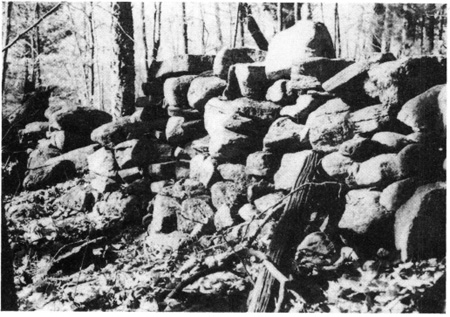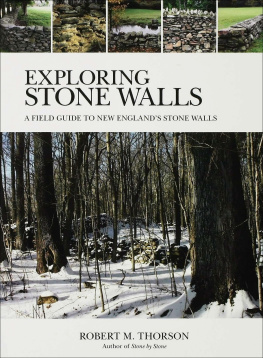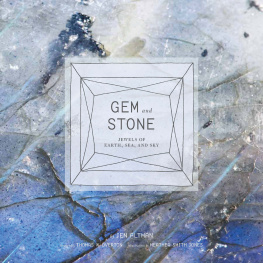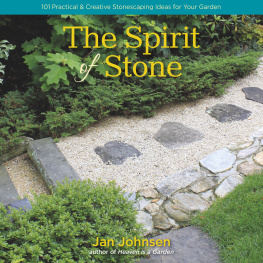"If I were to own just one book on the stone walls of New England, it would be Robert Thorson's." Tom K. Wessels
"An enlightening excursion that goes well beyond the romantic notions surrounding the walls." Booklist
"If the preservation effort needs a manifesto, Thorson has one." The Washington Post
" [Few geologists] dare to make plain their passion for rocks, as Thorson does, much less linger on the sensual details of their mediumits color, texture, sound, and odor. And most geological writing doesn't venture very far or boldly into the realm of human culture, an area to which Thorson's scientific expertise makes the most startling contribution." Orion
"Now I know why all the stone walls I've ever stumbled across in the northeast woods are thigh-highalong with about a thousand other interesting details that shed illuminating light on the human history of this sweet region." Bill McKibben
"Robert Thorson teases from New England's ubiquitous stone walls a natural and cultural history of the region, from the grinding glaciers that shaped the stones to the spreading asphalt deserts that are displacing them. A nature lover's 'must read.'" Chet Raymo
"Robert Thorson offers the most complete natural history ever written about New England's fabled stone walls. This alone would have been valuable enough, but he doesn't stop there. His restless, provocative examination lays out ideas like multiple courses of well-placed fieldstone, uniting the histories of New England's geology, environment, culture, and economy in a study built on science and sustained by passion. Stone by Stone should be an instant necessity for anyone who wonders why our landscape looks the way it does." Kevin Gardner
STONE
BY
STONE
The Magnificent History
in New England's Stone Walls
ROBERT M. THORSON

Copyright 2002 by Robert M. Thorson
All rights reserved.
You may not copy, distribute, transmit, reproduce, or otherwise make available this publication (or any part of it) in any form, or by any means (including without limitation electronic, digital, optical, mechanical, photocopying, printing, recording, or otherwise), without the prior written permission of the publisher. Any person who does any unauthorized act in relation to this publication may be liable to criminal prosecution and civil claims for damages. For information address Bloomsbury USA, 1385 Broadway, New York, NY 10018.
Published by Bloomsbury USA, New York
Bloomsbury is a trademark of Bloomsbury Publishing Plc.
Library of Congress Cataloging-in-Publication Data
Thorson, Robert M., 1951
Stone by stone : the magnificent history in New England's stone walls / Robert M. Thorson.
p. cm.
Includes bibliographical references and index.
1. Stone walls New EnglandHistory. I. Title.
TH2249 .T46 2002
621.2'7dc21
2002071356
First published in the United States of America in 2002 by Walker Publishing Company, Inc.
Published simultaneously in Canada by Fitzhenry and Whiteside, Markham, Ontario L3R 4T8
eISBN: 978-0-802-71920-1
To find out more about our authors and books visit www.bloomsbury.com. Here you will find extracts, author interviews, details of forthcoming events and the option to sign up for our newsletters.
TO MY FAMILY, FOR BEING PATIENT

Never tell me that not one star of all
That slip from heaven at night and softly fall
Has been picked up with stones to build a wall
from "A Star in a Stoneboat" by Robert Frost
Contents


My interest in stonewalls began in 1984 when I moved from Alaska to the New England woodlands and had my first encounter with one. Its effect on my thinkinga mixture of surprise, incredulity, and curiositymotivated me to pay attention to them as scientific objects instead of simply as artifacts. In 1990, while I held a fellowship in the history department at Yale University, sponsored by William Cronon and jointly funded by the Mellon Foundation, my interest evolved into a professional commitment to treat stone walls as landforms. Two years later, while I was a visiting scholar in geography at Dartmouth College, my commitment evolved into an actual investigation, half of which was carried out in the archive of its Baker Library, the other half in the foothills of New Hampshire's White Mountains during a field expedition sponsored by Earthwatch, and assisted by volunteers from around the country The investigation finally turned into this book under the care of my agent, Lisa Adams, at the Garamond Agency, my editor, Jackie Johnson, and the rest of the staff of Walker & Company.
There are many others who helped along the way At Dartmouth, Robert Brackenridge sponsored my appointment, Jere Daniel introduced me to the enigmatic photographer Wallace Nutting, and Jeff Hawkins helped me calculate the metabolic rate of its football team. Gordon Whitney of Harvard Forest made available its unpublished archive of maps, and helped me hone my arguments more sharply. Jack Larkin of Old Sturbridge Village, Massachusetts, and Esther Morn Swift of the Billings Farm Museum in Woodstock, Vermont, provided unpublished data on land-use patterns and helped critique my ideas. David Porier of the Connecticut State Historical Commission shared many of his sources.
At the University of Connecticut, my colleagues Jamie Eves, Harold Spencer, and Randall Steinen reviewed the manuscript for errors in their respective disciplines of history, art, and science. Robert Gradie and Kevin McBride helped introduce me to stone walls on early field trips. Carol Davidge, Ray Joesten, Marylin Nelson, Sam Pickering, and Suzie Staubach encouraged me through it all. I appreciate the assistance of my graduate students, especially Robert Cless, Dan Forrest, and Gregory Brick.
At home, I had the support of my family, particularly Kristine Hoy Thorson, who convinced me that words really do matter, and my sons, Tyler and Kevin, whose habit of looking for gems in our crushed-stone driveway convinced me that stones were interesting to almost everyone. I was also inspired by my daughter Katrina, whose favorite playscape is our most tumbled-down wall.
Most important, I want to thank Howard Russell, Susan Allport, David Foster, William Cronon, Kevin Gardner, David Leveson, J. B. Jackson, Roderick Nash, Wendell Berry, Chet and Maureen Raymo, and Annie Dillard for sharing their ideas through their books. Without access to them, Stone by Stone would be little more than a chain of geoar-chaeological inferences.

A tumbled woodland wall

Abandoned stone walls are the signatures of rural New England. Crisscrossing the parks, suburbs, and farms of nearly every village and town, they are relics of a vanished agricultural civilization that once flourished in hillside farming communities. In 1939, the mining engineer Oliver Bowles, using data from an 1872 Department of Agriculture report on fences, estimated that there were approximately 240,000 miles of stone walls in New England. That's longer than the U.S. coastline, or even the distance to the Moon at perigee. The mass of stone used in those walls is greater than that from all the remaining ancient monuments put together.
Next page











